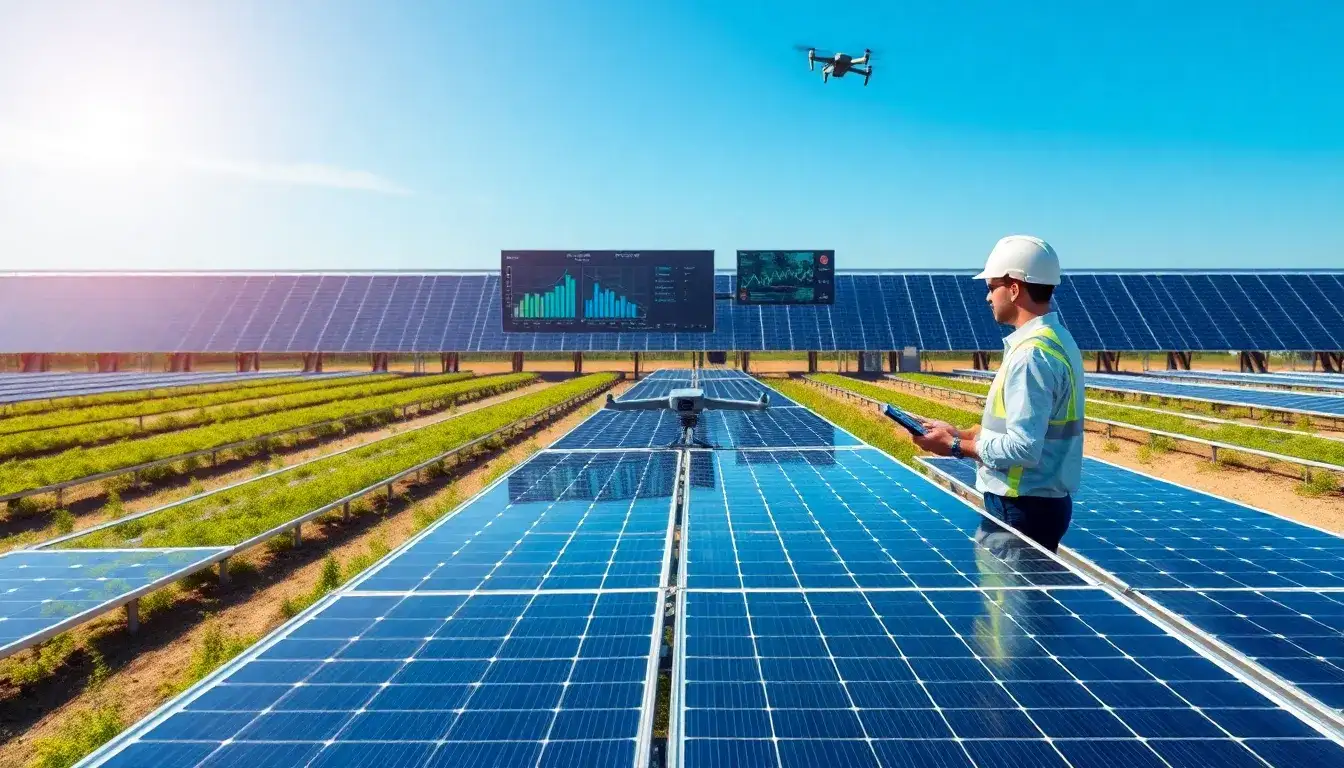
Smart Operation and Maintenance System for Photovoltaic Power Stations: Safeguarding Solar Gains
In the daily operations of photovoltaic power stations, efficiently generating electricity, ensuring equipment safety, and reducing maintenance costs have been longstanding challenges in the industry. Traditional operation and maintenance (O&M) methods rely on manual inspections and basic equipment monitoring, which are not only inefficient but also make it difficult to identify potential issues in a timely manner. Today, intelligent O&M systems based on data collection and analysis are equipping solar power stations with a smart brain, making management more precise and secure.
1. Around-the-Clock Data Collection: Understanding the Pulse of Power Station Operations
The core of the smart O&M system for photovoltaic power stations is data. By deploying sensors on key equipment such as solar panels, inverters, and combiner boxes, the system can continuously collect various operational parameters, including current, voltage, temperature, and solar irradiance. Additionally, weather stations monitor environmental factors such as humidity, wind speed, and light intensity, creating a comprehensive profile of the power station’s operations. This data is transmitted to the cloud via the Internet of Things (IoT), providing accurate raw material for subsequent analysis.
2. Three-Tier Safety Monitoring: Early Risk Warnings
- Equipment Anomaly Alerts: The system automatically identifies issues such as hot spots on solar panels, abnormal temperatures in junction boxes, and decreased efficiency in inverters, preventing equipment damage that could lead to fires or generation losses.
- Environmental Risk Monitoring: Real-time monitoring of extreme weather conditions such as heavy rain, strong winds, and snow accumulation, combined with structural data from the mounting systems, assesses risks and promptly provides protective recommendations.
- Electrical Safety Protection: Utilizing leakage current detection and insulation resistance analysis, the system mitigates safety hazards related to aging lines and grounding faults, ensuring the safety of both the power station and personnel.
3. Intelligent Data Analysis: Exposing Hidden Issues
After processing and analyzing the massive amounts of data, the system can automatically generate multidimensional analysis results:
- Performance Assessment: Comparing theoretical generation capacity with actual output helps identify underperforming solar strings.
- Fault Diagnosis: Machine learning techniques are used to recognize abnormal patterns, enabling precise fault localization.
- Predictive Maintenance: By analyzing equipment degradation trends, the system allows for proactive planning of cleaning and maintenance schedules, reducing unexpected downtime.
4. PC-Based Visualization: Clear Operational Decisions
All analysis results are centrally displayed on a PC-based visualization platform:
- Dashboard: Line graphs and heat maps showcase real-time power generation, equipment health, and other critical indicators.
- Map Location: By clicking on an electronic map, users can view the operational status of individual solar panels and quickly pinpoint any anomalies.
- Report Generation: Daily, monthly, and fault analysis reports are automatically produced, providing data support for management decisions.
Every ray of sunlight at a photovoltaic power station deserves to be efficiently utilized. Through a closed-loop of data collection, analysis, and decision-making, the smart O&M system transforms traditional maintenance into refined and intelligent management, allowing operators to truly grasp the data value behind the sunlight.







